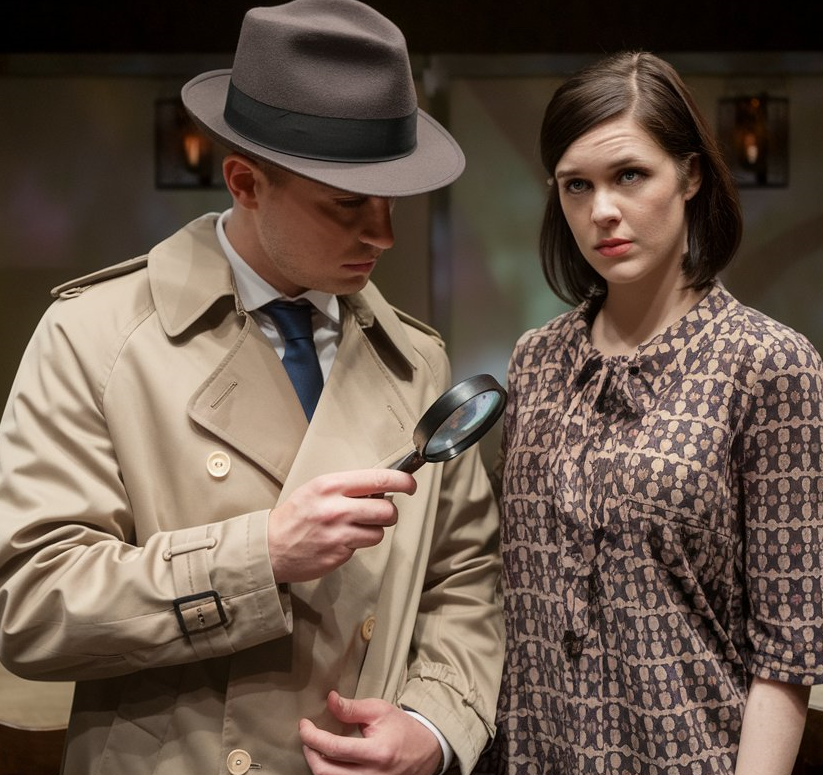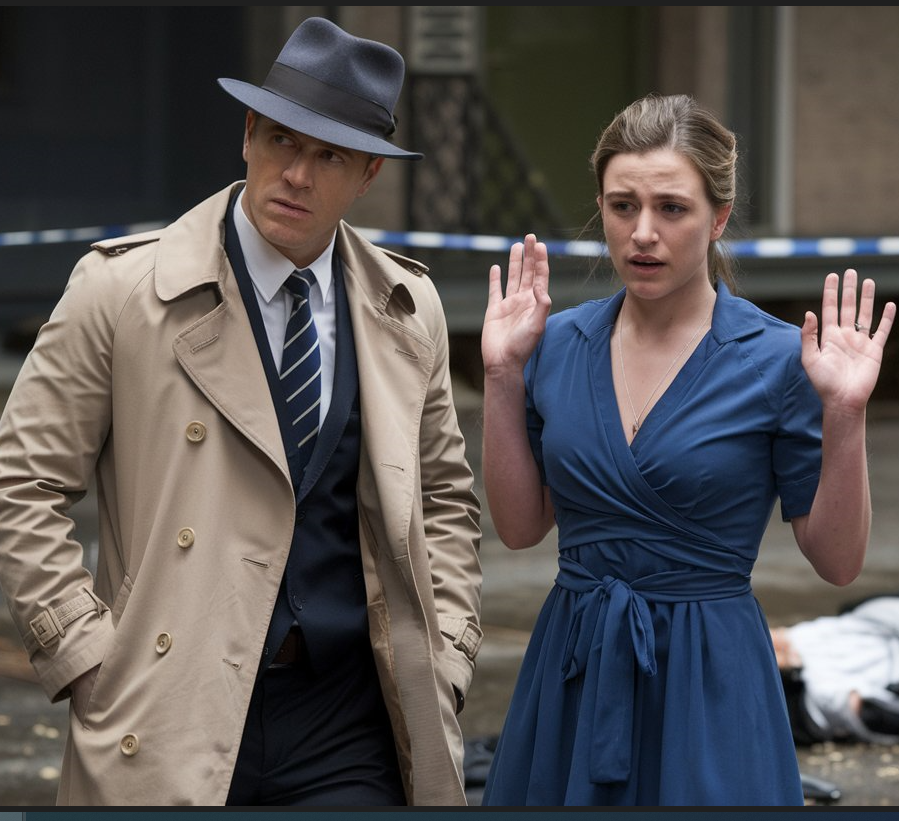In the world of criminal investigations, the term “Detective vs Suspect” refers to the complex dynamic between those tasked with solving crimes and those under suspicion. Detectives are skilled professionals dedicated to unraveling the truth through evidence, questioning, and observation. The “Detective vs Suspect DTI” technique plays a crucial role in identifying deception through psychological analysis and interview strategies. On the other hand, suspects are individuals who have been linked to a crime either through circumstantial evidence, eyewitness testimony, or investigation.
Picture this: the intense gaze of a detective, tirelessly examining every detail, while the suspect’s heart races, hoping their secrets remain hidden. The game of cat and mouse between these two forces is one of the most gripping aspects of crime dramas and real-life investigations alike. This intricate power struggle captivates audiences, creating moments that are as nerve-wracking as they are fascinating. This tense and crucial relationship is at the heart of every thrilling crime story, where the detective’s job is to distinguish fact from fiction, and the suspect must navigate the intense scrutiny of law enforcement.
The concept of “Detective vs Suspect DTI” takes this dynamic to a whole new level, introducing the concept of DTI (Deception Detection Interviewing) techniques. These techniques are designed to analyze the psychological responses and body language of suspects to detect lies and inconsistencies. With a blend of cutting-edge science and psychological strategies, DTI offers a powerful tool for detectives to uncover the truth and secure justice. This combination of human intuition and technology makes the Detective vs Suspect DTI scenario both compelling and essential in modern criminal investigations.
The Science Behind DTI: A Detective’s New Microscope

When a detective faces a suspect across the interview table, what they can’t see may be more important than what they can. Diffusion Tensor Imaging acts as a sophisticated microscope, revealing the hidden architecture of the brain’s white matter tracts—the communication highways that connect different brain regions.
Detective vs Suspect DTI investigations begin with understanding how this technology actually works. Unlike traditional MRI that simply photographs brain structures, DTI tracks the movement of water molecules along neural pathways. Since water diffuses more freely along the length of intact neural fibers (a property called anisotropic diffusion), DTI creates detailed maps of neural connectivity and integrity.
“DTI doesn’t just show us the brain—it shows us how the brain is wired. For detectives, this is like upgrading from a street map to a complete schematic of the city’s electrical and plumbing systems.” — Dr. Elaine Harmon, Forensic Neuroscientist
For investigators skilled in Detective Techniques Interview strategies, DTI provides context that traditional methods simply cannot. The technology reveals:
- White matter abnormalities potentially linked to impulse control problems
- Neural pathway disruptions that might affect decision-making
- Evidence of traumatic brain injuries invisible to standard imaging
- Structural differences that could impact a suspect’s capacity for deception
However, Detective vs Suspect DTI analysis requires specialized training. The colorful tractography images that DTI produces aren’t simply “brain photographs” but complex data visualizations requiring expert interpretation.
| DTI Feature | What It Shows | Investigative Relevance |
|---|---|---|
| Fractional Anisotropy (FA) | Integrity of white matter tracts | May indicate trauma history or developmental issues |
| Mean Diffusivity (MD) | Average molecular motion | Often altered in various brain pathologies |
| Tractography | 3D visualization of neural pathways | Shows connectivity between brain regions involved in decision-making |
| Region of Interest Analysis | Focused examination of specific brain areas | Can target areas relevant to specific behavioral questions |
Reading the Criminal Mind: What DTI Actually Reveals

The implementation of Detective vs Suspect DTI technology has transformed how we understand criminal behavior. Traumatic brain injuries (TBIs), particularly to the frontal lobe, have long been associated with increased aggression, poor impulse control, and diminished moral reasoning. DTI excels at revealing these injuries, even when they’re missed by conventional imaging.
In Law Enforcement Interrogation Methods, this information creates new challenges. When a suspect demonstrates abnormal brain structure, investigators must consider:
- Is this abnormality relevant to the crime in question?
- Does it explain the behavior without excusing it?
- How should this information influence interview strategies?
Suspect Interview Dynamics shift dramatically when neurological evidence enters the picture. Consider the case of James Fallon, a neuroscientist who discovered his own brain scan showed patterns typically associated with psychopathy. Despite these structural abnormalities, Fallon never committed violent crimes—illustrating the crucial limitation of DTI evidence: it may show correlation but cannot prove causation.
Cognitive Interview techniques must adapt when investigators have access to a suspect’s DTI results. The detective may need to:
- Modify questioning to account for potential cognitive limitations
- Evaluate inconsistencies differently when memory systems show structural damage
- Consider alternative explanations for behavioral signals traditionally associated with deception
However, practitioners of Detective vs Suspect DTI analysis must maintain scientific humility. The relationship between brain structure and behavior remains complex, with many factors beyond neural architecture influencing human actions.
High-Profile Cases: DTI in the Investigation Room

The Herbert Case (2018) stands as a landmark in Detective vs Suspect DTI application. When 45-year-old Marcus Herbert faced charges for a violent assault that seemed entirely out of character, his defense requested DTI scanning. The results revealed extensive damage to white matter tracts connecting his prefrontal cortex with emotion-regulating structures—damage consistent with Herbert’s history as a former football player.
Detectives trained in Forensic Linguistics and Statement Analysis noted that Herbert’s linguistic patterns during interrogation reflected frontal lobe dysfunction:
- Difficulty maintaining narrative coherence
- Problems shifting between topics
- Reduced emotional vocabulary when describing the incident
While prosecutors initially dismissed these findings, the detective assigned to the case recognized their significance. By adapting Strategic Use of Evidence (SUE) tactics to account for Herbert’s neurological condition, investigators ultimately uncovered that Herbert had suffered an undiagnosed seizure during the incident.
Detective vs Suspect DTI techniques have also proven valuable in multi-suspect investigations. In the 2020 Westlake conspiracy case, DTI evidence helped distinguish between leader and follower psychology among five suspects. Traditional Behavioral Analysis Interview methods had failed to clearly establish hierarchy among the co-conspirators, but DTI findings revealed significant differences in neural architecture associated with dominance behaviors and susceptibility to influence.
The Reid Technique, long controversial for its confrontational approach, has been particularly undermined by DTI evidence in cases involving suspects with neurological abnormalities. This has accelerated the shift toward the PEACE Model and other information-gathering approaches that produce more reliable results across neurologically diverse populations.
The Courtroom Battlefield: Presenting DTI Evidence

When Detective vs Suspect DTI findings reach the courtroom, admissibility becomes the first hurdle. Under the Daubert standard that governs most U.S. jurisdictions, scientific evidence must be:
- Based on testable theories/techniques
- Subject to peer review
- Have known error rates
- Widely accepted within the relevant scientific community
DTI evidence meets these criteria to varying degrees depending on what precisely is being claimed. Courts generally accept DTI’s ability to identify structural abnormalities but remain skeptical of claims directly linking these abnormalities to specific behaviors.
Detective vs Suspect DTI evidence presentation requires careful collaboration between investigators and neuroscience experts. Effective strategies include:
- Visual simplification: Converting complex tractography into easily understood visual comparisons
- Contextual interpretation: Placing findings within the broader investigative context
- Limitation acknowledgment: Proactively addressing what DTI cannot tell us
Defense attorneys increasingly employ neurological experts in Truth Verification Techniques challenges. They may argue that traditional Police Questioning Methods are unreliable when applied to suspects with brain abnormalities. This “neurological vulnerability” defense has succeeded in several high-profile cases, particularly regarding the reliability of confessions.
Detective vs Suspect DTI dynamics in court also raise profound questions about Miranda Rights and informed consent. Can a suspect with frontal lobe damage truly understand their rights? Does neurological impairment affect the reliability of waiver decisions? These questions continue to shape case law around Confession Reliability.
Ethical Minefields in Neurological Investigation

The application of Detective vs Suspect DTI techniques raises profound ethical concerns that investigators cannot ignore. Cognitive Load Theory suggests that suspects with certain brain abnormalities may be particularly vulnerable to suggestive questioning and may produce false confessions under pressure.
Non-verbal Communication Analysis, a staple of traditional interrogation, becomes problematic when suspects have neurological differences that affect their baseline behaviors. Research shows that autism spectrum disorders, traumatic brain injuries, and various psychiatric conditions can produce non-verbal cues that untrained observers mistake for deception markers.
The right to mental privacy presents another ethical frontier in Detective vs Suspect DTI investigations. Unlike physical evidence collection, neuroimaging may reveal aspects of a person’s mind they themselves are unaware of. This raises serious questions about Interrogative Suggestibility and self-incrimination.
Key ethical considerations include:
- Should suspects have the right to refuse brain scanning?
- Does DTI evidence risk creating a form of neurological determinism that undermines our legal system’s foundation in free will?
- How can we ensure equitable access to DTI technology for both prosecution and defense?
- What safeguards prevent misuse of brain data beyond the specific investigation?
Detective vs Suspect DTI protocols must navigate these ethical minefields carefully. The Information-gathering Approach to interrogation, which emphasizes open questions and rapport, may be more ethically sound when neurological evidence suggests cognitive vulnerabilities.
The Cutting Edge: Next-Generation DTI Techniques

The future of Detective vs Suspect DTI investigations is being shaped by rapid technological advancement. Machine learning algorithms now enhance DTI analysis, detecting subtle patterns human analysts might miss. These AI-powered tools can:
- Identify abnormalities too nuanced for visual inspection
- Compare suspect scans against databases of thousands of control subjects
- Predict potential behavioral implications of specific white matter configurations
- Flag cases where traditional interview techniques might be problematic
Detective vs Suspect DTI technology is becoming increasingly integrated with other biometric data. The multi-modal approach combines DTI with:
- Genetic information
- Functional brain imaging (fMRI)
- Hormonal profiles
- Traditional psychological assessments
This integration offers more comprehensive suspect profiles but raises serious Coercive Questioning concerns. As technology advances, investigators must maintain the proper balance between scientific tools and human judgment.
The horizon of Statement Validity Assessment includes portable DTI technology that could potentially be deployed in field investigations. While years from practical implementation, these advances would fundamentally transform Detective vs Suspect DTI dynamics by making rapid neurological assessment possible during initial suspect contact.
Best Practices for Modern Investigators

Effective Detective vs Suspect DTI investigations require interdisciplinary teams with specialized training. Best practices include:
- Training Requirements: Investigators should complete at least 80 hours of neuroscience fundamentals training before incorporating DTI evidence
- Team Composition: Cases involving DTI should include a forensic neuroscientist, trained investigator, and forensic psychologist
- Communication Protocols: Regular case conferences using standardized terminology prevent misinterpretation
Rapport Building Techniques remain essential even as technology advances. DTI findings should inform, not replace, skilled human investigation. When detective and suspect interact, the biological insights from DTI should enhance, not override, the detective’s understanding of human psychology.
Detective vs Suspect DTI investigations work best when following these guidelines:
- Use DTI as one component of a comprehensive investigation
- Maintain appropriate skepticism about causative claims
- Document precisely how DTI findings influenced investigative decisions
- Preserve raw scan data and analysis parameters for potential reanalysis
Discourse Analysis applied to suspect statements should be integrated with DTI findings rather than conducted in isolation. This combined approach has proven particularly effective in distinguishing between deception and confusion resulting from neurological differences.
Conclusion: The Future of Neuro-Investigation
The evolution of Detective vs Suspect DTI techniques represents both tremendous opportunity and significant challenge for modern criminal investigation. As we gain unprecedented access to the physical basis of human behavior, we face profound questions about determinism, free will, and the nature of criminal responsibility.
When detective meets suspect in tomorrow’s investigation room, their interaction will be informed by neuroscience in ways we’re only beginning to understand. The detective who masters both traditional Investigative Interviewing skills and cutting-edge neurological tools will have advantages their predecessors could only imagine.
Yet the greatest detective skill remains what it has always been: understanding not just the brain, but the person. Detective vs Suspect DTI findings provide valuable context, but human behavior emerges from a complex interaction of biology, psychology, and environment that no single technology can fully capture.
As Linguistic Markers of deception become better understood through neuroscience, and as Detective vs Suspect DTI techniques grow more sophisticated, we must ensure that justice remains our guiding principle. Technology should serve justice, not define it.
The ultimate goal of any Detective vs Suspect DTI investigation isn’t simply to explain behavior through brain structure but to uncover truth while respecting human dignity. In this balance lies the future of neurologically-informed criminal investigation.
FAQs About DTI in Criminal Investigations
Can DTI determine if someone is lying? No. While DTI can identify brain structures associated with increased impulsivity or reduced emotional regulation, it cannot detect deception in real-time or determine truthfulness of specific statements.
Are brain scans admissible in all states? Admissibility varies significantly by jurisdiction. Most states allow DTI evidence with proper expert testimony, but courts differ widely in what claims they permit based on this evidence.
How much does DTI evidence typically cost? A complete DTI analysis, including scanning and expert interpretation, typically costs between $4,000-$8,000, making it prohibitively expensive for many defendants without institutional resources.
Can suspects refuse to undergo DTI scanning? Generally yes. Under current law, brain scanning typically requires consent except in rare circumstances involving court orders in cases of diminished capacity evaluations.
How does DTI differ from a lie detector test? Fundamentally. Polygraphs attempt to measure physiological responses to specific questions in real-time. DTI examines fixed brain structure and makes no claims about truthfulness of specific statements.
What training do detectives need to use DTI evidence? At minimum, investigators should complete specialized courses in neuroscience fundamentals, DTI interpretation basics, and the limitations of neurological evidence in behavioral prediction.




